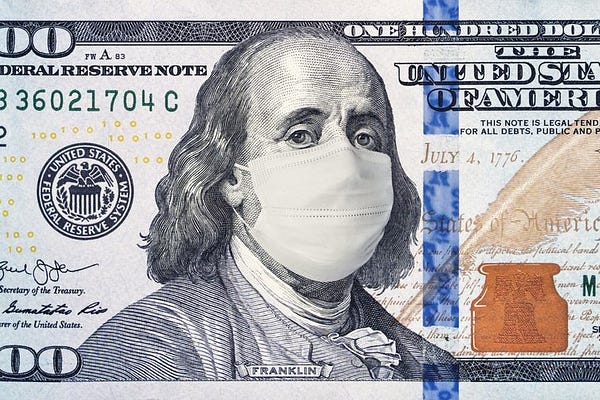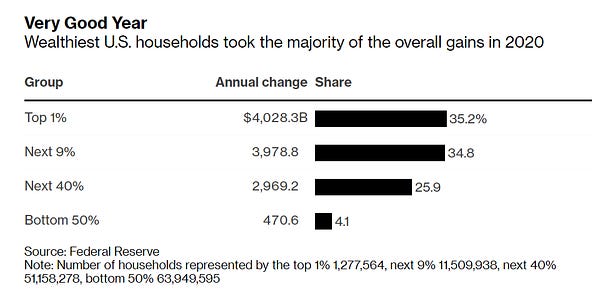Before I get into my own spiel about the Cantillon Effect, I have to credit Sahil Bloom, vice president of Altamont Capital Partners, for explaining it so eloquently in the Twitter thread below. If you have a Twitter account, I recommend both reading Bloom’s thread on this topic as well as following Bloom on Twitter. He helps to break down seemingly complex financial topics in layperson’s terms. I’ve learned a lot from him.


And, now, my spiel shall commence!
The Cantillon Effect is named after Richard Cantillon, an Irish-French financier, philosopher, and economist born in the 1680s. He wrote one of the earliest treatises in modern economics, Essai sur la nature du commerce en général (Essay on the Nature of Commerce in General), published in 1755. The Irish like to call him, “The Father of Economics”, but, you know those Irish, always inflating their self worth.
The premise of this work was that the primary recipients of new money that enters the economy enjoy a much higher standard of living than those to whom the money trickles down (Bloom). In simpler terms, when The Federal Reserve prints new money and issues it banks and local governments as opposed to directly issuing it to the people, it the banks and local governments that profit most from it - not the people (or small businesses) that the money is intended to help. We saw the shams that ensued as money for the PPP program was (or maybe “wasn’t” is the better word) rolled out. We saw big banks generate over $18 billion in fees as they distributed money that the Fed gave to them for free. America’s four biggest banks - Bank of America, Wells Fargo, JP Morgan Chase, and U.S. Bank were sued in April of 2020 as they failed to process forgivable loans to small businesses on a first-come-first-serve basis, as, instead, these banks “reshuffled” PPP paperwork and prioritized the applications that would make the banks the largest fees. So, what we have here is The Federal Reserve printing more money, which lessens the value of the U.S. dollar, as it fattens margins for the biggest banks in the country. I have a few friends who own small businesses who essentially got crumbs from these banks, while millions were given to Trump and Kushner properties and God only knows much was given to hedge funds and private equity firms. I wish I had some quippy to say here, but I don’t. This makes my blood boil.
But we’re not done discussing the adverse effects of the Cantillon Effect.
Once the word is out that new money is flowing through the system, prices begin to rise to catch up to the new demand (Bloom). So, while some of this new cash may have trickled down to you, it has hardly increased your value, as you now need to pay more to maintain your current quality of life. Again, those who first received the money from the Fed are significantly better off, while those furthest from the main distribution point of the money are maybe marginally better off (if not worse off if inflation runs rampant and the prices of things like consumer goods and rent rise).
The Cantillon Effect is the reason that the government rarely provides “bottom-up” support. There is no profit to be made by the big banks if the money doesn’t flow through them. And God forbid we don’t run money through bureaucrats in state and local governments. What would we do without having to interact with some antiquated administrative system to beg the government for this money that people and institutions closer to the Fed were handed with zero friction? It would be more efficient to simply put the money in the hands of the people. There is a reason things aren’t done that way, though, and that reason is that most people are not in on the game. Most people can’t afford to hire lobbyists to make sure that money continues to flow in the direction that they want it to flow. Most small businesses don’t have a close enough relationship with the heads of big banks to make sure that they receive their fair share of PPP loans. George Carlin perhaps summed this up most eloquently when he stated that “It’s a big club, and you ain’t in it.” And, as a result, we exist in a system that produces yet another illusion, the illusion that debasing the currency (printing more money) will provide a buoy for the average person, when, in reality, it is likely doing the opposite.
Combine the Cantillon Effect with the fact that those with (the right) assets have been the biggest beneficiaries of The Fed’s printing money and you get the following:


Consider Giving Back
As we can see above, those on the lowest rungs of the socioeconomic ladder are hurting the most right now. And, as some of you know, I spent some time in Venezuela years back. The country is still facing a humanitarian crisis and people are in need of basic resources, including food. Meals 4 Hope is an organization that provides food and health services to some of Venezuela’s most vulnerable. Some members of my extended family are good friends with some of the people who work with this organization and can vouch for the fact that the money that the organization takes in reaches the people that it serves. To put the work that they do directly into my aunt’s words: “It is a great organization doing lifesaving work.” Please consider donating if you find yourself in a position to do so.
Best,
Frank
Twitter: @frankcorva
Currently Reading: “The Number Zero and Bitcoin,” by Robert Breedlove





Great write up. The Cantillon Effect is a must know for everyone in this country.
Nice one